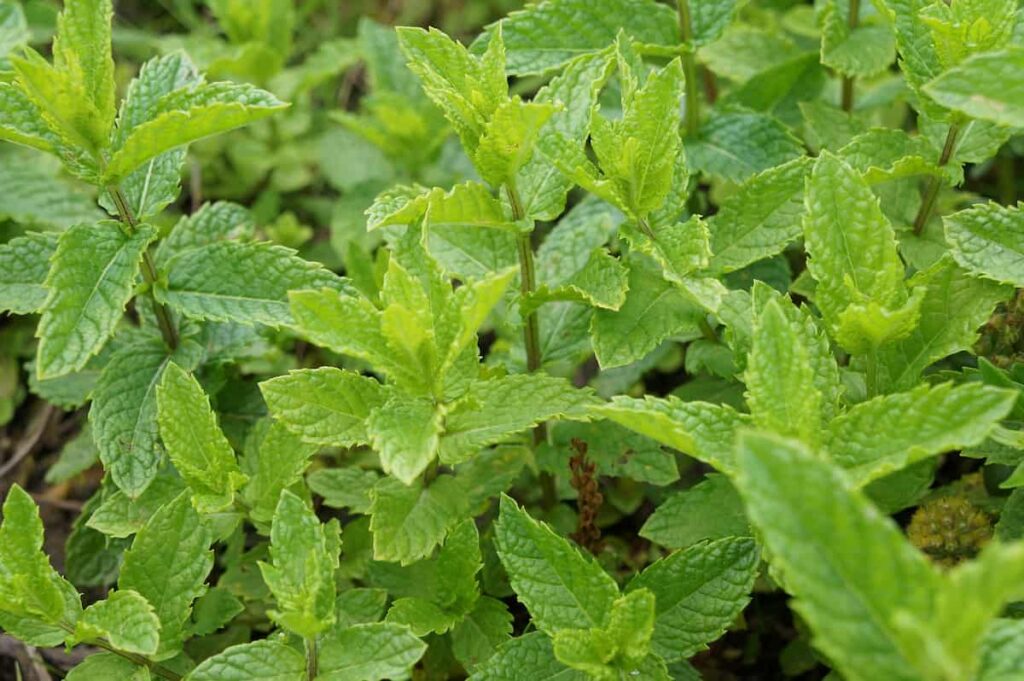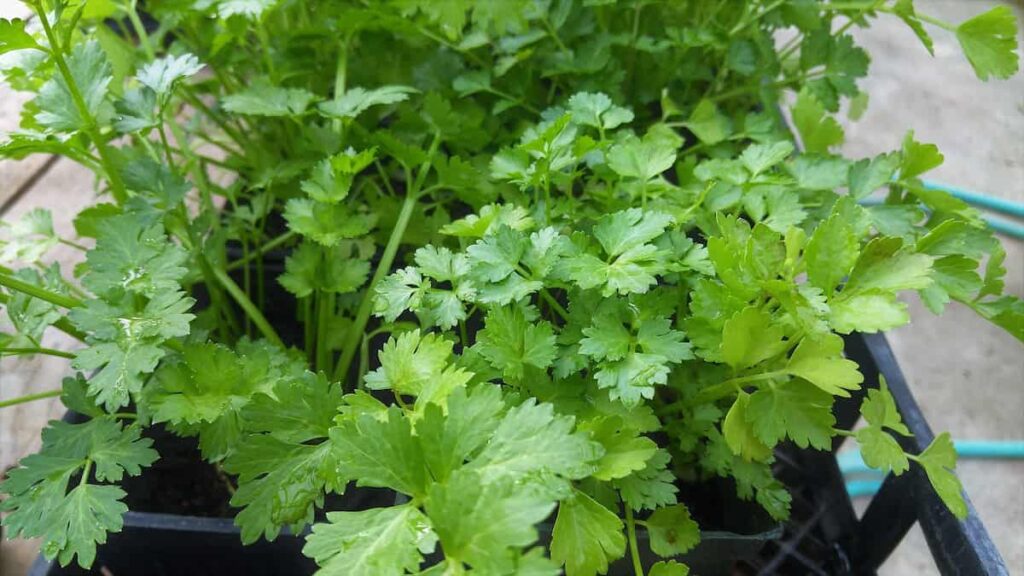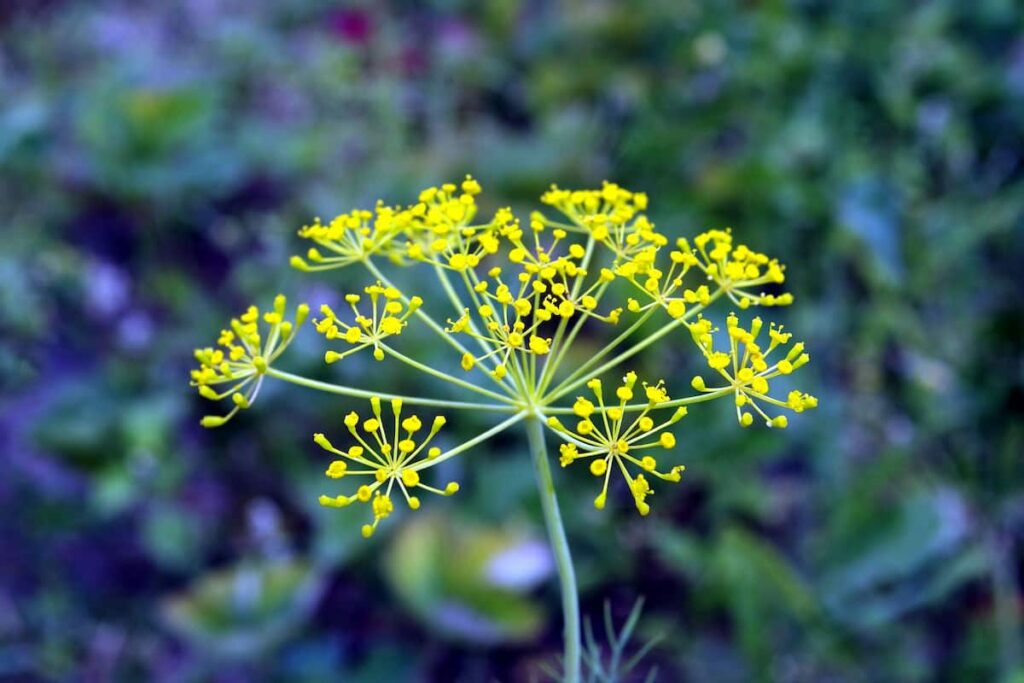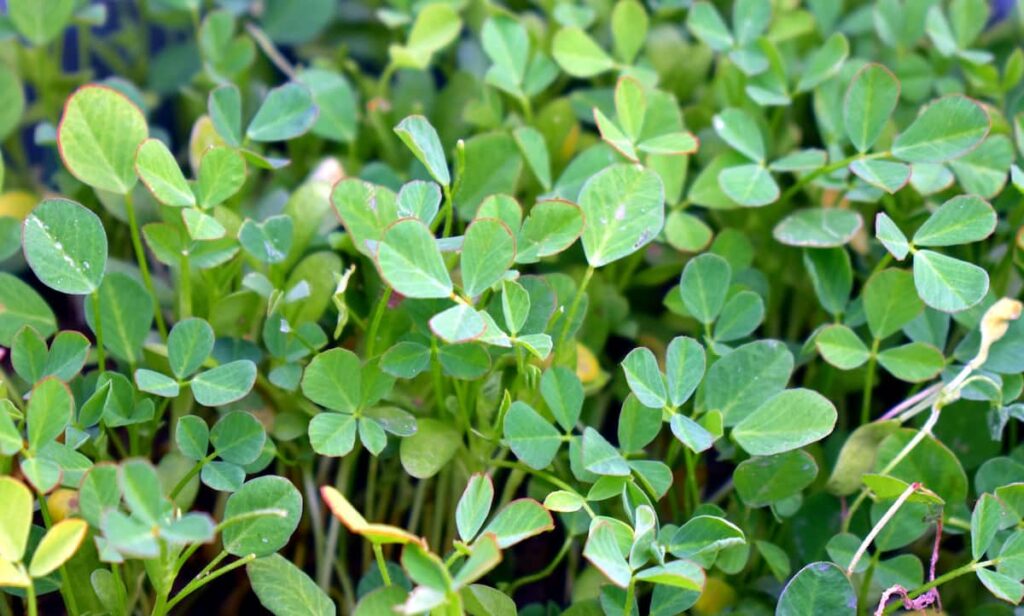Container gardens are ideal for growing herbs. It is a good idea to grow herbs in a pot for everyone. Containers provide an excellent way to grow herbs, making them more visible if planted for beauty. It is possible to grow herbs as annuals or perennials. Annual herbs are grown for one season, harvested when flower buds appear, and discarded after harvest. It is possible to bring perennial herbs indoors during winter since they grow year after year.
Sunlight is all you need to grow herbs, even if you don’t have much outdoor space. Whenever temperatures become too hot, you can move a container herb garden into a shadier or warmer spot. Some herbs, such as lemon balm and mint, grow best in containers because they become invasive in gardens. Consider what type of herbs to grow in the container, and let your imagination run wild.
There should be adequate holes in the container, and it should drain well. Containers made of terracotta, wood, and cement are some of the most popular. Herb gardeners often prefer Terra-cotta because it can wick away moisture naturally. Consider using a Mexican strawberry pot if you want style and practicality. Whenever you need some flavor for your food, you can grow various herbs.
21 Best herbs for container gardening
Mint
In addition to being versatile and highly invasive, mint is a highly productive container crop. There are many types of mint: spearmint, basil mint, pineapple mint, chocolate mint, ginger mint, etc. Like most herbs, it prefers shady areas and does not require full sun. For mint to thrive, organic matter-rich soil is all it needs. It is fine to plant mint in any pot 6-8 inches deep, but it should be wide since mint spreads through runners. In addition to growing mint in containers, you can also grow it in hanging baskets.
For this plant to grow well, it needs regular feeding. Therefore, it should be watered regularly and picked up regularly. Soon, it will grow into a bushy plant that produces leaves continuously from April to November. After your plant has established itself, take it out of the pot each spring after its winter dies back, divide it into halves or quarters, and repot it with fresh compost. This process keeps its vigor and provides new mint plants to give away or add to your mint collection.

Basil
There is nothing better than fresh basil in the summer. Greenhouses are ideal for growing it, as it thrives in warm, bright, sheltered conditions. Different varieties of basil are available. This herb grows well in containers of all shapes and sizes from seed. Plant basil in large, five-gallon containers when pairing it with other herbs, or try growing it in smaller containers if you want a more compact plant.
Green, lustrous leaves complement flowers and edibles planted in nutrient-rich potting soil. You can enhance its growth by amending your containers with finished compost before planting and during the growing season. It is a tough plant that can be grown in various pots. It needs a pot at least 12-14 inches in diameter. In addition, it does not like to go to bed with wet roots. A well-drained soil and morning water are essential for its growth.
Cilantro
Cilantro, also known as coriander, is the leafy part of the plant, and its tangy leaves or dried seeds can be used. Make sure the soil is well drained before planting this annual herb. Ideally, Cilantro should be planted in full sun. However, it can tolerate some shade. A pot is also a convenient way to grow this herb.
Plant it in a container garden at least 12 inches deep and as wide as you want since it has a long taproot. It can grow up to two feet tall in some varieties. It is best to sow Cilantro every few weeks in spring and late summer since it goes to seed quickly. You can also purchase plants. For best results, make sure the soil is evenly moist.
In case you missed it: How to Grow Coriander/Cilantro from Seed to Harvest: Check How this Guide Helps to Start a Coriander Garden for Beginners

Dill
Like fennel and carrot, dill has a sharp and tangy flavor. Suva, Soya, Chatakuppa, Satakuppa, Catakuppai, Kattucata, Kuppai, and Sompa are common names for this plant. You can grow this plant in your Indian herb garden. Sow dill seeds directly in the desired location, pot the plant in well-draining loamy soil, and water it regularly throughout the growing season. Choose a pot 10 to 12 inches deep for growing dill on your balcony or terrace.
In case you missed it: How to Grow Dill from Seed to Harvest: Soil, Propagation, Planting, and Care

Chives
Chives grow well in containers and can reach a height of up to 20 inches. It is best to grow chives in fertile, well-drained soil in full sun or partial shade. In early summer, chives usually flower, making the flowering stems too tough to eat. It produces tasty, garlicky greens all season long when it blooms in late summer or early fall.
When letting your plants regrow year after year in the same pot, be sure to divide them periodically, preferably in the spring. As a result, they will not become root-bound. The second harvest of standard chives can be obtained by cutting back the chives in midsummer. Both varieties easily grow from seed or root divisions and have edible blossoms.
Curry Leaves Tree
Curry leaves are used in Indian cuisines for their strong and distinctive flavor, such as lemongrass, anise, and citrus. It is also known as Kadi Patta, Meethi Neem, Kareapela, Karepaku, Gandhabevu, Arpatil, Mechiyaa Saag, and Mitho Neem. Start this small tree in a medium 12-inch deep pot, then move to one size bigger as soon as it outgrows its current container. It can reach up to 8-10 feet tall in pots.
It only requires well-drained soil, full sunlight, a moderate watering schedule, and warm and humid conditions to grow well. Adding fresh or dried leaves to curries at the beginning of the cooking process will give them an earthy, aromatic taste. Mostly in southern India, it is used in Sambhar, Daal ka Tadka, Poha, non-vegetarian dishes, and Kadhi.
In case you missed it: How to Grow Curry Leaves from Seed to Harvest: Check How this Guide Helps Beginners

Rosemary
Despite being an annual, rosemary grows well in pots, making it easy to bring indoors when the weather cools. A well-draining soil and full sunlight are ideal for rosemary growth. However, this plant does not like wet roots, so avoid overwatering it and make sure it receives proper drainage. Hot, dry, and very sunny conditions are ideal for rosemary. Most rosemary cultivars grow upright, but a few cascade down, making them perfect for pots and planters. Its fresh, sharp taste makes it an essential herb for Mediterranean cooking.
Sorrel
Sorrel is another perennial you can add to your herbal containers. A container is an easy way to grow it. Sorrel is one of the earliest herbs to sprout and produce in springtime, making it a welcome addition to any mixed pot or planter box. One of the most popular herbs is French sorrel.
It would be best if you trimmed or divided your sorrel from year to year to keep it healthy. It will keep producing new leaves if you pick the outer leaves. You can grow them from seeds or root divisions. In the same way as chives, the root will grow over time. Pots with a minimum depth of 6 inches are suitable for this plant.
Fenugreek
There is a sweet and nutty flavor to fenugreek, commonly used in Indian dishes and considered a leafy vegetable. As a herb, dried leaves are commonly known as methi, Greek clover, Greek hay Methi Mente, Mentepalle, Mentesoffu Uluva Bahuparni, Chandrika, Dipani, and Gandhaphala. Growing this plant is one of the best things you can do for your Indian herb garden.
Ideally, fenugreek requires 4 to 5 hours of direct sunlight and mildly acidic to alkaline soil with a pH between 6.5 and 8.2. Water the plant regularly to keep the soil moist. It is best to plant methi in wide planters if you are growing it in containers. The ideal pot should be 6 inches deep and as wide as possible.
In case you missed it: How to Grow Fenugreek/Methi from Seed to Harvest: Check How this Guide Helps Beginners

Lemon Balm
Lemon balm is a mint cousin with a similar aggressive growth habit that can rapidly engulf small garden spaces. Consequently, lemon balm can be grown in containers easily. You should use potting soil and compost in the soil mixture and water it frequently. Ample moisture is necessary for the best flavor. It smells and tastes like lemons when the glossy green leaves are crushed. Fruit salads, tea, lemonade, and marinades are excellent with it.
Lemongrass
Lemongrass tea is quite famous and one of the best Indian herb garden plants you can grow. The plant is also known as Oil grass, West Indian lemongrass, Gandhatrina, Haona, Olecha, Karppurappul, Vasana Pullu, and Bhustrina. Lemongrass’ tangy lemon-like aroma makes it a perfect addition to soups, stews, curries, and teas. Water the plant frequently and keep it in full sunlight. Ensure the conditions are warm and humid so the plants can grow to their full potential. Containers are a good fit for it. Plants do well in pots that are 10-12 inches in diameter.
Thyme
Thyme is one of the best herb choices for container gardening; it is drought-tolerant, low maintenance, and can tolerate neglect. Due to its small size, it is perfect for small containers since it only reaches about 10 inches high. Thyme is also a great addition to soups and poultry dishes.
A container with tiny leaves mounded over the edge looks great when planted at the front. Make sure it gets full sun, and don’t overwater it. Low-growing herbs like this should be grown near the edge of containers to prevent them from getting lost. Thyme spreads slowly over the season, developing woody stems that support tiny, fragrant leaves.
Oregano
Oregano is a prolific grower, so potting it is an easy, beautiful way to control its growth. As with mint, oregano is fast-growing and will spread throughout your garden if you allow it. You can keep oregano contained by planting it in a deep, wide container with one or two other herbs or annual vegetables. In North America, Greek oregano is probably the most common variety. The flavor of this variety lasts for many months due to its ability to dry well. Even though sweet marjoram has a less spicy and fuller flavor than oregano, it is often used interchangeably with either herb.
Bay Leaves
Indian cassia, Indian cassia bark, Tamala cassia, Tejpatta, Tejpat, Talishappattiri, and Tamalapattra are all names for bay leaf. Plants should be grown in well-drained soil and placed in full sunlight. Water the plant regularly and fertilize it three to four times per year for optimum growth.
A medium 12 inches deep pot is the starting size. Whenever the plant outgrows the current pot, the pot is changed to a bigger one. Bay leaves have an aroma and taste similar to cinnamon, cassia, and cloves. Garam masala is made from dried bay leaves in vegetarian and non-vegetarian cuisines. Among the best Indian herb garden plants, it is highly recommended.
Parsley
Parsley adds a mild taste to your dishes with an aftertaste of anise or licorice. There are a variety of uses for this herb, including garnishing, flavoring, and adding color to soups, curries, and salads. Besides stuffings and marinades, you can also use parsley leaves in omelets. Seemamalli and Ajmood are also named for them.
Growing parsley from seeds or buying a healthy plant from a nursery near you is possible. Ensure the soil is rich, well-draining, and receives full to partial sunlight when growing parsley. A pot with a minimum size of 8 inches is ideal for growing this herb.
Sage
It is best to grow Sage in large pots or planter boxes. The fragrant and colorful display of sage can be pretty pleasing to the eye. Variegated pineapple sage can add contrast to any mix, while purple sage adds visual interest to plantings. Due to its Mediterranean origin, sage prefers full sunlight.
As long as the soil is drained well, it will grow in marginal soil. Smell a sage plant, and most people will conjure up images of Thanksgiving. There are many other uses for sage, both culinary and medicinal. The plant’s slow growth and predictable habit make it an ideal companion for container growing.
In case you missed it: How to Grow Sage from Seed to Harvest: Planting and Care

Fennel
The plant is also known as Saunf, Florence fennel, Finocchio, Sompu, Preumjirakam, Misreya, and Madhurika. Yellow flowers and feathery leaves make it a perennial herb. Fennel grows best in rich, moist soil with 6 hours of sunlight daily. Fennel produces long taproots, so use a big pot to grow it. Besides stews and soups, you can also add sliced fennel bulbs to them. A mouth freshener made from these fragrant seeds is widely used in India.
Lemon Verbena
The lemon verbena plant grows annually in container gardens, where it’s usually grown as a tropical shrub. Lemon Verbena plants should be planted in pots filled with well-drained potting mix. Lemon verbena needs minimal nutrients and should not be fertilized. Full sun is the best environment and can reach a height of three feet.
Winter savory
Unlike its summer cousin, winter savory returns year after year in warm climates. Like most herbs on this list, it thrives when exposed to six or more hours of sunlight per day. It grows slowly (slightly taller than thyme) and requires little care. Oregano and lavender are vigorous herbs that will hold their own when planted together. It will thrive in a planter box if you add it.
Carom Plant
The ajwain plant should be grown in partial sun on nutrient-rich, well-draining soil. You should avoid overwatering your plants, as it can cause them to die. It is also known as Ajwain, Jowan, Yavano, Ajamoola, Oma, Omu, Ajamoda, Ova, or Ajamoda. Pick a container for it since it is suitable for containers. Small containers are ideal for growing it. Cakes, pakoras, chutneys, and parathas have a stronger flavor than Greek oregano. These leaves have medicinal properties, so you can use them to make a concoction to treat coughs and colds.
Lavender
The lavender plant can grow into a small bushy perennial shrub. Most varieties prefer full sun, but some can tolerate partial shade. It’s important not to overwater lavender, as it prefers a dry environment.
Herb container tips
- Remember that soil will dry out faster in smaller containers. Therefore, using a high-quality potting mix that does not contain soil dug from the ground or composted bark, peat moss, or other organic matter ingredients is essential.
- Add organic fertilizer before planting, or use a liquid fish or kelp fertilizer at half strength every few weeks (since container-grown herbs need additional nutrients).
- Herbs that can be overwintered indoors can be moved back once the temperatures warm up in spring, such as basil, dill, Cilantro, and tarragon.
Conclusion
Planting herbs in a container makes them more accessible, and you’re more likely to use them if they’re outside your kitchen door. In addition, it is easy for beginners to grow many herbs. Interplanting herbs in flowering containers enhance the appeal of the container because they add fragrance and texture. They are available in various sizes to fit just about any pot, planter, window box, or hanging basket. Organize your favorites into mini herb gardens by giving them their planters or combining them into one large pot.
- How to Grow Hibiscus from Flower
- Plantation Ideas for Home Decoration: A Beginners Guide
- Flower Garden Designs and Layouts for Beginners
- Planting and Spacing Techniques in Papaya: A Beginner’s Guide
- Growing Gold: Essential Techniques for Planting Pineapples
- How to Make Kalanchoe Plant Bushy: Home Remedies and Solutions
- 11 Reasons Why Your Gardenia is Not Blooming: Home Remedies and Solutions
- Eco Elegance: The Guide to Designing a Drought-Tolerant Landscape
- Gardening on a Slope: Strategies for Hillside Landscaping
- Nourish and Flourish: Top Organic Mulches for Thriving House Plants
- Everything You Want to Know about Indian Mogra Flower: Discover Uses and Growing
- Green Thumb Success: Expert Tips for Cultivating Greenhouse Pumpkins All Year Round
- Maximize Growth & Flavor: The Ultimate Guide to Companion Planting in Herb Gardens
- How to Control Rhododendron Problems Naturally: Home Remedies and Organic Ways to Fix Them
- Natural Magic: The Remarkable Benefits of Cinnamon for Plants
- Best Steps to Revive Dying Tulip with Natural and Organic Treatment
- 10 Reasons Why Your Angel Trumpet is Not Blooming: Remedies and Treatment
- How to Fix Periwinkle Leaf and Flower-Related Problems: Natural Remedies and Solutions
- How to Fix Zinnias Leaf and Flower Problems: Discover Natural and Home Remedies
- Organic Steps to Induce Lemon Tree Flowers: A Comprehensive Guide
- Bloom Booster: Crafting the Perfect Homemade Bougainvillea Fertilizer
- Optimizing Growth: A Guide to Applying NPK Fertilizer for Potted Plants
- 10 Best Homemade Fertilizers for Rubber Plant: DIY Recipes and Application Method
- How to Boost Female Pumpkin Flowers: Effective Steps for More Flowers and High Yields
- Transform Your Indoor Garden: Top Benefits of Pink Salt for Houseplants
- 10 Best Homemade Fertilizers for Peacock Plants (Calathea): Easy DIY Guide
- Unlock Blooms: 9 Reasons Why Your Potted Chrysanthemum is Not Blooming
- 8 Reasons Why Your Potted Hibiscus is Not Blooming: Fix it with Simple Solutions
- Unlock Blooms: 9 Key Reasons Your Potted Frangipani Won’t Flower
- 10 Reasons Why Is My Ice Plant Not Blooming: Remedies and Treatment
- 10 Reasons Why My Potted Hydrangea Not Blooming: Treatment and Remedies
- 10 Reasons Why is My Wisteria Not Blooming: Remedies and Treatment
- 10 Reasons Why is My Goldfish Plant Not Blooming: Remedies and Treatment
- Maximize Your Space: Ultimate Guide to Balcony Gardening with Grow Bags
- 10 Reasons Why Your Iris is Not Blooming: Remedies and Treatment
- 10 Reasons Why Your Anthurium Plant is Not Blooming: Treatment and Remedies